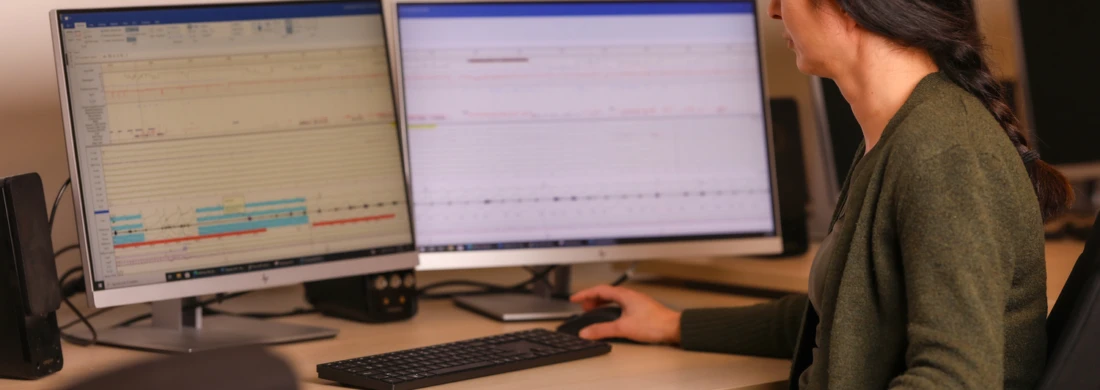The Center for Sleep Medicine at Kempenhaeghe provides highly specialized care for patients with sleep disorders that manifest during REM sleep, particularly in complex and rare conditions such as REM sleep behavior disorder and Parkinson’s disease.
REM Behavior Disorder

REM Sleep Disorder
A REM sleep disorder is a type of parasomnia, a form of abnormal behavior during sleep. This disorder occurs when a person physically acts out vivid dreams during sleep. These dreams are often action-filled and can even be violent.
It is relatively easy to wake someone with this disorder while they are enacting a dream. Once awake, the dreamer can recall and describe the dream in vivid detail. The details of the dream usually align with the unusual behavior the patient exhibited during sleep.
For patients with (suspected) REM sleep disorder, referral to the Center for Sleep Medicine at Kempenhaeghe may be beneficial.
REM Sleep and Related Disorders
REM Sleep Behavior Disorder (RBD)
This is a type of parasomnia that occurs specifically during REM sleep. In REM Sleep Behavior Disorder (RBD), patients may exhibit abnormal behavior during sleep, such as moving or talking.
Under normal circumstances, the body is paralyzed during REM sleep, but in RBD, this paralysis is absent. As a result, patients can physically act out their dreams, sometimes posing a risk to themselves or their bed partner.
Diagnosis
The diagnosis of REM Sleep Behavior Disorder (RBD) is conducted through polysomnography (PSG) with extensive monitoring, including video recordings and, in some cases, additional electrodes (extended EMG placement) to record muscle activity.
Treatment
Treatment may include behavioral therapy, modifications to the sleep environment to prevent injuries, and, in some cases, medication. In adults, RBD can be a precursor to neurological disorders, such as Parkinson’s disease.
REM Sleep and Sleep Disorders in Parkinson’s Disease
Patients with Parkinson’s disease or parkinsonism often experience sleep disorders, including REM Sleep Behavior Disorder (RBD). This can have serious consequences for the patient.
The Center for Sleep Medicine uses polysomnography with extensive monitoring to diagnose these sleep disorders and, if necessary, initiate CPAP treatment during the study for life-threatening complications such as sleep-related stridor.
Importance of REM Sleep in Diagnosis
The REM sleep phase is crucial for diagnosing various sleep disorders. In cases where parasomnias are suspected, polysomnography is used to distinguish between REM sleep and non-REM sleep parasomnias, as treatment strategies differ depending on the sleep phase involved.